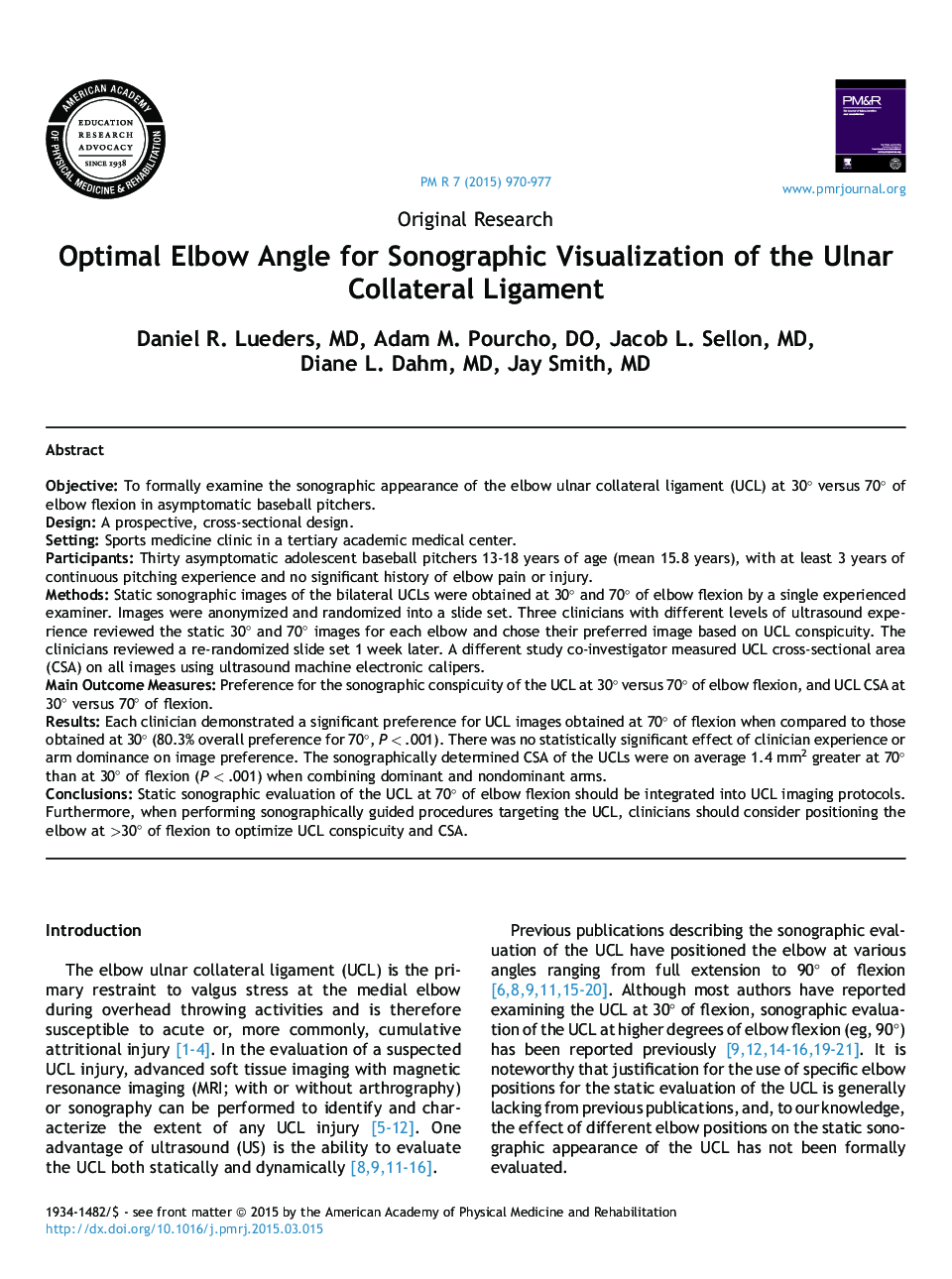| Article ID | Journal | Published Year | Pages | File Type |
|---|---|---|---|---|
| 2712057 | PM&R | 2015 | 8 Pages |
ObjectiveTo formally examine the sonographic appearance of the elbow ulnar collateral ligament (UCL) at 30° versus 70° of elbow flexion in asymptomatic baseball pitchers.DesignA prospective, cross-sectional design.SettingSports medicine clinic in a tertiary academic medical center.ParticipantsThirty asymptomatic adolescent baseball pitchers 13-18 years of age (mean 15.8 years), with at least 3 years of continuous pitching experience and no significant history of elbow pain or injury.MethodsStatic sonographic images of the bilateral UCLs were obtained at 30° and 70° of elbow flexion by a single experienced examiner. Images were anonymized and randomized into a slide set. Three clinicians with different levels of ultrasound experience reviewed the static 30° and 70° images for each elbow and chose their preferred image based on UCL conspicuity. The clinicians reviewed a re-randomized slide set 1 week later. A different study co-investigator measured UCL cross-sectional area (CSA) on all images using ultrasound machine electronic calipers.Main Outcome MeasuresPreference for the sonographic conspicuity of the UCL at 30° versus 70° of elbow flexion, and UCL CSA at 30° versus 70° of flexion.ResultsEach clinician demonstrated a significant preference for UCL images obtained at 70° of flexion when compared to those obtained at 30° (80.3% overall preference for 70°, P < .001). There was no statistically significant effect of clinician experience or arm dominance on image preference. The sonographically determined CSA of the UCLs were on average 1.4 mm2 greater at 70° than at 30° of flexion (P < .001) when combining dominant and nondominant arms.ConclusionsStatic sonographic evaluation of the UCL at 70° of elbow flexion should be integrated into UCL imaging protocols. Furthermore, when performing sonographically guided procedures targeting the UCL, clinicians should consider positioning the elbow at >30° of flexion to optimize UCL conspicuity and CSA.
